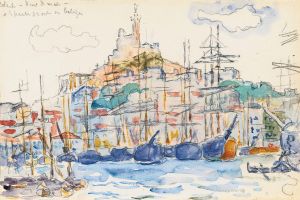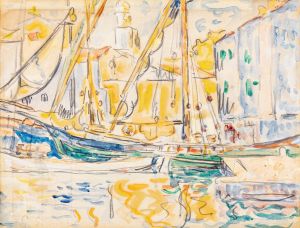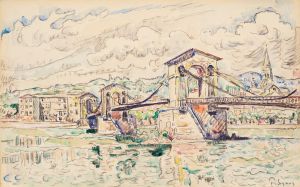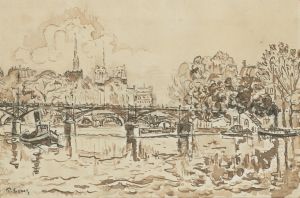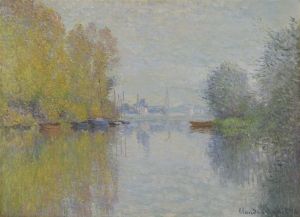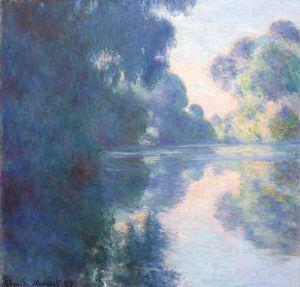
Paris, le Pont des Arts
A hand-painted replica of Paul Signac’s masterpiece Paris, le Pont des Arts, meticulously crafted by professional artists to capture the true essence of the original. Each piece is created with museum-quality canvas and rare mineral pigments, carefully painted by experienced artists with delicate brushstrokes and rich, layered colors to perfectly recreate the texture of the original artwork. Unlike machine-printed reproductions, this hand-painted version brings the painting to life, infused with the artist’s emotions and skill in every stroke. Whether for personal collection or home decoration, it instantly elevates the artistic atmosphere of any space.
Paul Signac's painting "Paris, le Pont des Arts" is a notable work within the Post-Impressionist movement, specifically associated with the technique of Pointillism, which Signac helped to pioneer alongside Georges Seurat. Painted in 1925, this artwork captures the iconic Pont des Arts, a pedestrian bridge in Paris that spans the River Seine, connecting the Institut de France and the central square of the Palais du Louvre.
Signac was deeply influenced by the vibrant life and scenery of Paris, and "Paris, le Pont des Arts" exemplifies his fascination with the interplay of light and color. The painting is characterized by the use of small, distinct dots of color applied in patterns to form an image, a hallmark of the Pointillist technique. This method relies on the viewer's eye to blend the colors optically rather than physically mixing pigments on a palette, creating a luminous effect that was revolutionary at the time.
The Pont des Arts itself is a significant cultural and historical landmark in Paris. Originally constructed between 1802 and 1804 under the reign of Napoleon Bonaparte, it was the first metal bridge in the city. The bridge has long been a favorite spot for artists, lovers, and tourists, offering picturesque views of the Seine and the surrounding architecture. Signac's depiction of the bridge captures not only its structural elegance but also the vibrant atmosphere of the city.
In "Paris, le Pont des Arts," Signac employs a palette of soft, harmonious colors, capturing the serene yet dynamic essence of the scene. The painting reflects the artist's interest in the effects of light on water and architecture, with the Seine depicted in a mosaic of blues and greens, and the bridge and surrounding buildings rendered in warm earth tones. The sky is often depicted in pastel hues, suggesting a time of day when the light is gentle and diffuse, possibly during early morning or late afternoon.
Signac's work is not merely a representation of a physical location but also an exploration of the emotional and sensory experiences associated with it. His meticulous application of color and form invites viewers to engage with the painting on both an intellectual and emotional level, encouraging them to consider the relationship between color, light, and perception.
"Paris, le Pont des Arts" is part of Signac's broader body of work that explores urban and maritime themes, reflecting his lifelong passion for sailing and his deep connection to the cities and landscapes of France. As a leading figure in the Neo-Impressionist movement, Signac's contributions to art extend beyond his paintings; he was also an influential theorist and writer, advocating for the scientific approach to color and composition that defined Pointillism.
Today, "Paris, le Pont des Arts" is celebrated as a masterful example of Signac's skill and vision, embodying the innovative spirit of the Post-Impressionist era. It continues to be admired for its technical precision and its ability to evoke the timeless beauty of Paris.






